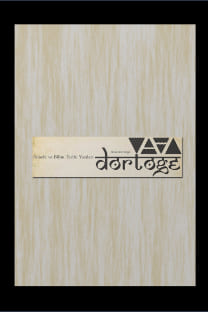Railton’un Olasılık Açıklamalarına Dair Dedüktif-Nomolojik Modeline İtirazlar
Bilimsel Açıklama, Dedüktif-Nomolojik Model, Hempel, Tekil eğilimli istatistiksel olaylar, Belirlenmezcilik, Bilim Felsefesi
objections to Railton’s Deductive-Nomological Model about Probabilistic Explanation
Scientific Explanation, Deductive Nomological Model, Hempel, Singular,
___
- Batterman, W. R. (1992). Explanatory Instability. Noûs 26, 325-348.
- Everett, H. (1957). “Relative State” Formulation of Quantum Mechanics. Reviews of Mod- ern Physics, 29 (3), 454-462.
- Gluck, S. & Gimbel, S. (1997). An Intervening Cause Counterexample to Railton’s DNP Model of Explanation. Philosophy of Science 64, 692-697.
- Griffiths, R. B. (1984). Consistent Histories and the Interpretation of Quantum Mechan- ics. Journal of Statistical Physics, 36, 219–272.
- Hempel, G. C. & Oppenheim:(1948). Studies in the Logic of Explanation. Philosophy of Science, 15 (2), 135-175.
- Hempel, G. C. (1965). Aspects of Scientific Explanation and Other Essays. New York, NY: Free Press.
- Howard, D. (2004). Who Invented the “Copenhangen Interpretation”? A Study in Mythol- ogy. Philosophy of Science, 71, 669-682.
- Kitcher:& Salmon, C. W. (Eds.) (1989). Scientific Explanation. University of Minnesota Press, MA: Minneapolis.
- Lucas, G. J. (1985). The Explanation of Unlikely Events. Southwest Philosophical Studies 9, 49-55.
- Railton:(1981). Probability, Explanation, and Information. Synthese, 48, 233-256.
- Railton:(1988). A Deductive-Nomological Model of Probabilistic Explanation. Joseph C. Pitt (Ed.), in Theories of Explanation (pp. 119-135). New York, NY: Oxford University Press. First published in Philosophy of Science 45(1978), 206-22
- ISSN: 2146-7064
- Yayın Aralığı: Yılda 2 Sayı
- Başlangıç: 2012
- Yayıncı: Nobel Akademik Yayıncılık
Cumhuriyet’in Bilim ve Teknoloji Politikası (1923-1950)
Kan Revan İçinde Tıbbın Kısa Tarihi
Railton’un Olasılık Açıklamalarına Dair Dedüktif-Nomolojik Modeline İtirazlar
Bizans Bilim ve Felsefesine Kronolojik Bir Bakış (1300-1453 Yılları Arasında)
Melek Dosay GÖKDOĞAN, Remzi DEMİR
Âşık Veysel’in “Yıllarca Aradım Kendi Kendimi” Şiirinden Hareketle Felsefenin Türk Kültüründeki Yeri
Kelimeler veya Şeyler: Aristoteles’in Kategorileri Neyi Sınıflar?
Yayın Politikası/Editorial Policy
